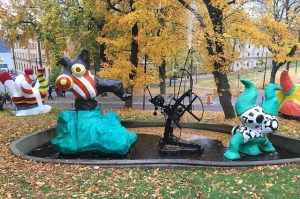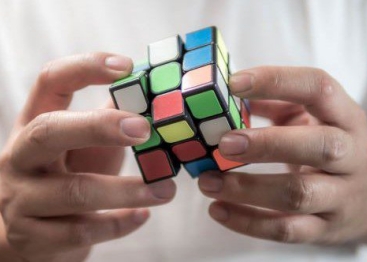10 Bizarre and Unnerving Objects Made from Human Remains
The human body is nothing short of a marvel—a masterpiece of biology that stands out as one of the most complex systems in the known universe. When you think about it, there’s really nothing else quite like it. From the intricate network of neurons in our brains to the delicate balance of organs keeping us alive, we’re walking, talking miracles of science. But here’s where things take a strange turn: some people have taken this complexity and used it as inspiration to create… well, let’s just say, unconventional things.
Imagine taking parts of the human body and repurposing them into something entirely new. It’s a concept that’s equal parts fascinating and unsettling. On one hand, it’s a testament to human creativity and our ability to see potential in the most unexpected places. On the other, it’s hard not to feel a little uneasy about the idea. After all, the human body is sacred to many, and tinkering with it in this way can feel like crossing a line.
Whether you find it fitting or off-putting, there’s no denying that these creations push the boundaries of art, science, and ethics. They challenge us to think about what it means to be human and how far we’re willing to go in the name of innovation. Love it or hate it, one thing’s for sure: the human body continues to inspire awe—and sometimes, a little discomfort—in the most unexpected ways.
10.Flesh Map

Artists are, by nature, unique and creative souls. To stand out in their craft, they often push boundaries, experiment with unconventional materials, and challenge what we consider “art.” While some stick to traditional mediums like paint or ink, others take a more radical approach. After all, art is about expression, and sometimes that expression comes in forms that make us stop and think—or even squirm.
Enter Andrew Krasnow, an American artist who doesn’t just push the envelope—he tears it open. For over two decades, Krasnow has used human skin as his primary medium. Yes, you read that right: human skin. Sourced from bodies donated to science, Krasnow transforms this unlikely material into thought-provoking sculptures. His creations range from lampshades and boots to a detailed map of the United States. Each piece is as unsettling as it is fascinating.
But Krasnow’s work isn’t just about shock value. There’s a deeper meaning behind his art. He sees it as a commentary on human cruelty, forcing viewers to confront uncomfortable truths about history, morality, and the darker sides of humanity. It’s art that doesn’t just sit quietly on a wall—it demands a reaction, whether that’s awe, discomfort, or introspection.
Love it or hate it, Krasnow’s work is a reminder that art isn’t always meant to be pretty or easy. Sometimes, it’s meant to challenge, provoke, and make us question the world around us. And in that sense, Krasnow’s creations are undeniably powerful.
9.Ancient Blood Paint

Few things capture the imagination like ancient cave paintings. These early forms of art, communication, and historical documentation offer a glimpse into the lives of our distant ancestors. While many of us picture simple stick figures hunting buffalo, there’s so much more to these ancient masterpieces. For instance, have you ever stopped to wonder what they used for paint? The answer might surprise you.
Recent research has revealed that prehistoric artists in Australia and Tasmania created their iconic red pigment in a way that’s both simple and startling: they used blood. Yes, blood. Analysis of several cave paintings, some dating back 10,000 years and one as old as 20,000 years, has detected proteins from human blood in the pigment. These paintings were often layered over even older carvings, which could date back as far as 31,000 years—making them some of the oldest known cave art in the world.
It’s a fascinating discovery that adds a new layer of meaning to these ancient works. Using blood as paint suggests a deep connection between the art and the artists, perhaps even a spiritual or ritual significance. Imagine the process: these early humans carefully mixing blood with other materials to create a lasting mark on the walls of their world. It’s a reminder that art has always been more than just decoration—it’s a way to tell stories, preserve history, and connect with something greater than ourselves.
8.Bone Sculptures
Not so long ago, humans used to be big fans of carving things from ivory. The fact that this had to be harvested from elephants wasn’t a concern for many people, and we’ve made countless pieces of art and even piano keys from it. The cruel and macabre practice is mostly, but not completely, behind us. But the fact is, death and the things it leaves behind have always fascinated us as a species. Some people are still making art from the bones of animals. And humans.
Bruce Mahalski makes sculptures that, from a distance, might look like any other sculpture you’d see in a museum. Get closer, however, and the textures will catch your eye. He makes extensive use of animal bones, the kinds of things that might be left over from dinner or found on the forest floor. But then there are the human ones.
Mahalski’s art is like a three-dimensional collage of bits and pieces, large and small. The human bones are given no more prominence than any others and, in fact, are often hard to pick out of the crowd. This is intentional, as Mahalski doesn’t feel like humans are any more important than the other creatures of the earth. His goal is simple to show a reverence for both life and death, whether the bones are from chickens or humans.
7.Body Worlds
In 1995, the world got its first glimpse of Body Worlds, an exhibit that has since captivated over 40 million people across the globe. From Tokyo to New York, museums have hosted this groundbreaking display—and its many spin-offs—drawing crowds eager to see the human body in a way they never have before. But what makes Body Worlds so fascinating? And why does it also leave some people feeling a little uneasy?
The exhibit’s concept is as intriguing as it is macabre. It uses a process called plastination, where fluids are removed from human bodies and replaced with polymers that harden, preserving the bodies in perfect detail. This allows the bodies to be posed, dissected, and displayed in ways that are both educational and startling. Imagine seeing a body stripped of its skin, revealing intricate layers of muscle, fat, and bone. Or a delicate web of veins and arteries, meticulously preserved to show the complexity of the human circulatory system. It’s science, art, and anatomy all rolled into one.
But Body Worlds hasn’t been without controversy. Initially, organizers claimed that all bodies were donated by individuals who knowingly consented to the process. However, in the early 2000s, the exhibit returned some bodies to China after evidence emerged that they may have belonged to executed prisoners. Competing exhibits, like Bodies, have faced similar scrutiny, with organizers admitting they can’t verify the origins of all the bodies used.
Despite the ethical debates, Body Worlds remains a powerful exploration of what it means to be human. It’s a reminder of our fragility, our complexity, and the incredible science that allows us to preserve and study the human form. Whether you find it awe-inspiring or unsettling, one thing’s for sure: it’s an experience you won’t soon forget.
6.Human Skin Books
For a serious book fan, nothing beats a leather-bound tome. Whether it’s a personal journal or a valuable old antique, a book bound in leather can be a conversation piece and a collectible. But it’s worth looking into when a leather-bound book was made, and exactly how it was made. Leather comes in various forms after all, from sheep to cow and, more often than you might think, human.
In the 19th century, it became a rare but not unheard-of practice for the flesh of executed criminals or mental patients to be used to bind books. The skin of the first man hanged at the Bristol Gaol in England was used to bind the book that told the story of the man’s crime. The flesh of William Burke, a known murderer, was used to bind a journal cover.
The practice was by no means widespread, and today there are only a handful of examples that have been found and definitively identified. It seems as though the books were mostly produced by doctors, people who had access to corpses and the skill to remove human flesh. Why they also felt the need to use it to make books is a matter that has not been fully determined, however.
5.Lab Grown Human Skin Bags
The future is racing toward us, and technology is reshaping the world in ways we couldn’t have imagined just a few years ago. Take a stroll through your local grocery store, and you’ll notice something unusual in the meat section: shelves dedicated to plant-based “meat” that’s not really meat at all. But that’s just the beginning. Soon, you might see another section filled with real meat—except it was never part of a living animal. Confused? Welcome to the world of lab-grown tissue.
Lab-grown meat is already making waves, promising to revolutionize everything from your summer barbecue to healthcare. But what if it could also transform fashion? If scientists can grow skin in a lab, why not use it to create leather? And if we’re growing skin, why stop at animal leather? What about human leather?
This isn’t just a wild idea—it’s already being explored. Back in 2016, designer Tina Gorjanc unveiled plans to create leather handbags using skin grown from the DNA of the late fashion icon Alexander McQueen. McQueen, who passed away in 2010, left behind hair samples containing his DNA, which Gorjanc proposed using to grow the material. The concept sparked both fascination and controversy, raising questions about ethics, ownership, and the future of fashion.
But it’s not just about celebrity DNA. The same technology could, in theory, allow anyone to create leather goods from their own genetic material—if they’re willing to pay for it. Imagine carrying a bag made from your own skin. It’s equal parts futuristic and unsettling, a bold statement on identity and sustainability.
Whether you find it groundbreaking or bizarre, one thing’s clear: the line between science and art is blurring faster than ever. Lab-grown skin could redefine how we think about fashion, ethics, and even what it means to be human. The future is here—and it’s wearing leather.
4.Teeth Necklaces

There’s a popular legend that George Washington had wooden teeth. Look into it and you’ll see that’s not the case and he very likely may have had dentures made from the teeth of other humans. There has always been a market for human teeth, and they’ve served a number of purposes. Reusing them as dentures is almost too normal. Back in the day, they were used as necklaces as well.
Archaeologists in Turkey uncovered relics in a Neolithic that date back thousands of years. Among them are some teeth that are around 8,500 years old, which were drilled and strung together to form a necklace, just like beads. Analysis also indicated that the teeth likely came from different people.
This doesn’t necessarily mean that ancient peoples were knocking teeth out just for the fun of making jewelry, but it also doesn’t preclude that as a possibility. There was no sign of disease, so the likeliest possibility was that they were removed from someone on purpose, rather than falling out naturally.
3.Hair Sweaters

In the Bible, wearing a hair shirt is a form of penance. You slip into a camel hair garment as a way to punish yourself because it’s terribly uncomfortable. In modern times we have terribly uncomfortable wool sweaters that can get very itchy and arguably fit the bill here as well. Suffice it to say, there are not many benefits to wearing a shirt made of hair. And those ones aren’t even human hair.
For those who do like the idea of hair, or fur, but not the cruelty aspect associated with traditional fur farming, some design clothing made from human hair. It’s arguably sustainable and offers something unique if nothing else.
2.Blood Album
When artists say they’ve poured their “blood, sweat, and tears” into their work, it’s usually just a metaphor. But sometimes, they mean it literally. Take, for example, the world of music, where a few daring artists have taken this idea to the next level—by pressing their actual blood into vinyl records. Yes, you read that right.
Back in 2012, the experimental rock band The Flaming Lips released an album titled The Flaming Lips and Heady Fwends. For their most devoted fans, they created 10 ultra-exclusive copies of the album, each containing blood samples from some of the album’s featured artists, including Keha,ChrisMartin,andErykahBadu.Pricedatacoolha,ChrisMartin,andErykahBadu.Pricedatacool2,500 each, these special editions came with a standard copy of the album, so fans could enjoy the music without worrying about a bloody mess in their record player. It was a bizarre, unforgettable collector’s item that blurred the line between art and biology.
But The Flaming Lips weren’t the only ones to dabble in this unusual trend. In 2014, Meredith Graves of the band Perfect Pussy took it a step further. Instead of encasing blood in a compartment within the vinyl, she had her own blood pressed directly into the wax itself. The result? 180 copies of an album that were as personal—and provocative—as it gets.
These blood-infused records are more than just gimmicks; they’re a bold statement about the connection between artist and audience. They force us to think about what it means to truly “own” a piece of art—and how far we’re willing to go to feel connected to the creators we admire. Whether you find it fascinating or downright strange, one thing’s for sure: it’s a reminder that art can take many forms, even the ones that make us squirm.
1.Blood Ink
Using blood in art isn’t just an ancient practice—it’s found its way into modern creativity too. And no, it’s not just some avant-garde experiment. In fact, blood has been used in mainstream art more than once, often with jaw-dropping results.
Take KISS, for example. Back in 1977, the band was at the height of their fame, so much so that Marvel Comics decided to immortalize them in their own comic book. In KISS Super Special #1, the band faced off against iconic Marvel villains like Dr. Doom. But here’s the twist: the ink used to color the comic contained real blood drawn from all four band members. It was a bold move, blending rock ‘n’ roll flair with comic book drama. And to prove it wasn’t just a gimmick, the process was certified by a notary public. Today, a well-preserved copy of this bloody masterpiece can fetch hundreds of dollars on eBay.
Fast forward to 2021, and rapper Lil Nas X stirred up his own controversy with a pair of limited-edition, Satan-themed sneakers. The shoes featured designs made with ink mixed with his own blood. While the idea sparked outrage and debate, it also made headlines worldwide, cementing the shoes as one of the most talked-about fashion statements of the year. Love it or hate it, the stunt worked—everyone was talking about it.
These examples show that blood in art isn’t just about shock value. It’s a way to create something deeply personal, provocative, and unforgettable. Whether it’s a rock band’s comic book or a rapper’s sneakers, blood has a way of making art stick in our minds—and sometimes, in our culture.

























